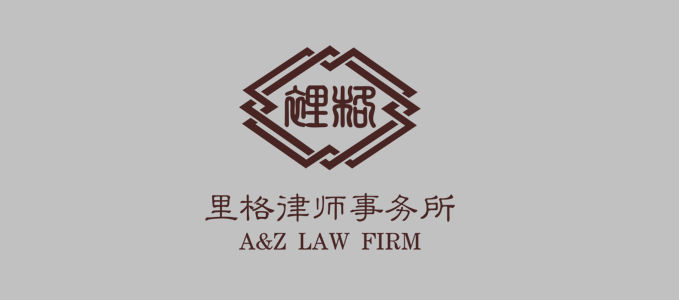Tencent Retrieves 129 Domain Names Under UDRP
Tencent Retrieves 129 Domain Names Under UDRP

Tencent Retrieves 129 Domain Names under UDRP
Alice Dong
In April of this year, the Experts Group of the Hong Kong Secretariat Panel of the Asian Domain Name Dispute Resolution Center (hereinafter referred to as ADNDRC) made a decision on the Domain Name dispute case (Case No. HK-1700951) between Tencent Technology (Shenzhen) Co., Ltd. (腾讯科技(深圳)有限公司) (‘Tencent’), the owner of registered trademarks ‘TENCENT’, ‘WECHAT’, ‘QQ’, and natural person Mr. Zhou (周某), the holder of the disputed Domain Names. The Panel ruled to support the Complainant Tencent's claim that all 129 disputed Domain Names be transferred to Tencent.
These 129 generic top-level domains (such as .com / .net / .org, etc.) are presented in, and are subject to, the Uniform Domain-Name Dispute-Resolution Policy (‘UDRP’) process and the rules of the Internet Corporation for Assigned Names and Numbers (‘ICANN’). The core principles and rules of Domain Name disputes could be summarized into three indispensable elements. In order to obtain the Panel’s favor, the Complainant Tencent must provide evidence showing the three required elements are satisfied at the same time in this case.
Three elements
- The disputed Domain Names are identical or confusingly similar to the trademark of the goods or the services mark to which the Complainant is entitled;
- The Respondent does not have the right to or a legitimate interest in the disputed Domain Name;
- The Respondent is malicious concerning the registration and use of the Domain Name.
Key Points in the Case
1. Whether the disputed Domain Names are identical or confusingly similar to Tencent’s trademarks.
In 2015 and 2016, the Respondent registered hundreds of Domain Names, such as tencentapp.com, wechatiot.cn, qqfamily.com.cn. Meanwhile, the Complainant Tencent have possessed a number of ‘TENCENT’, ‘QQ’ and ‘WECHAT’ trademarks since 2002, 2002 and 2012 respectively. The registration date of these trademarks is far earlier than that of the disputed Domain Names, and so far they remain effective.
The Panel believed that the registered trademarks of the Complainant are distinctive symbols of significance and are not generic terms. The disputed Domain Names contain mainly the registered trademark of the Complainant and other insignificant vocabulary (such as dream, pay, buy, etc.). The existence of these vocabulary items in these terms do not distinguish the disputed Domain Names from the registered trademarks of the Complainant, and on the contrary, strengthen the link between the two due to the relevance between these words and the Complainant’s business.
Therefore, the main parts of the disputed Domain Names are similar to the registered trademarks of the Complainant’s. It is easy for the public to mistakenly believe that the websites using the disputed Domain Names are the websites of the Complainant or have some connection with the complainant.
2. Whether the Respondent does not have a right to, or legitimate interest in, the disputed Domain Name.
The complainant's evidence shows that the Respondent did not hold any trademark of ‘TENCENT’, ‘QQ’, ‘WECHAT’ or a trademark containing wording of ‘TENCENT’, ‘QQ’, ‘WECHAT’, the Complainant never authorized or permitted the Respondent’s use of the ‘TENCENT’, ‘QQ’ or ‘WECHAT’ trademarks, and the Respondent is not affiliated with the Complainant in any way. Moreover, the disputed Domain Names did not direct individuals to any website. Contrarily, some of the disputed Domain Names pointed to a sales page for the Domain Names.
In Domain Name dispute cases, the burden of proof is usually transferred to the Respondent once the Complainant has provided prima facie evidence that the Respondent has no right or legitimate interest in the disputed Domain Name. In the present case, the Respondent has not refuted the Complainant’s claim and has no proof that it has a legitimate interest in the disputed Domain Names or that there is evidence that the Respondent is going to execute fair use or non-commercial use of the disputed Domain Names, nor that it has intentionally mislead the consumer to obtain commercial interests.
3. Whether the Respondent is malicious about the registration and use of the disputed Domain Names.
As mentioned above, the Complainant clearly owned registered trademarks earlier than the Respondent owned the Domain Names. Moreover, the Complainant has invested a great amount of money and effort to promote its trademarks. Nowadays, products and services to which these trademarks are attached or with which they are associated, have achieved great success and are widely integrated in people's daily lives in China. These brands are household names. In addition, these trademarks are not generic or ordinary terms. It is unlikely to be mere coincidence that the Respondent chose these trademarks as the main part of the disputed Domain Names accidentally or by chance.
In light of the reputation established by the Complainant itself, the Panel had no reason to presume that the Respondent was unaware of the existence of the Complainant and its registered trademarks, and that it registered the disputed Domain Names purely on the basis of coincidence. Therefore, the Panel held that the Respondent’s registration behavior was malicious as he knew that he had no legal interest in the trademarks.
More evidence stated clearly that the Respondent had never put the disputed Domain Names into actual use upon the registration, but placed some of the disputed Domain Names on the Internet for public sale, mentioning ‘TENCENT’, ‘QQ’, ‘WECHAT’ on multiple sale pages. In addition, the Respondent had registered more than 2,300 Domain Names, many of which contained registered trademarks of others.
Link of Case No. HK-1700951:
https://adndrc.org/diymodule/docUDRP/HK-1700951_Decision.pdf



